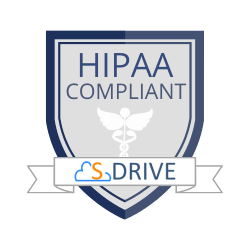Teams rely on Salesforce to manage customer records, track deals, and organize workflows. However, documents often sit at the center of these processes, especially in the form of PDFs. Proposals, contracts, and compliance forms usually arrive as PDFs because they keep formatting consistent across devices.
The problem appears when someone needs to make adjustments. Without built-in PDF editing, staff must download files, open separate tools, and then re-upload them. This slows work, creates version confusion, and exposes sensitive data to unnecessary risks. By bringing PDF capabilities into Salesforce, companies streamline collaboration while keeping documents secure.
Why Teams Struggle with PDFs in Salesforce
Salesforce offers strong data management features, but PDF handling often lags. Common problems appear once files need adjustments. For example, legal teams may receive a contract draft in Salesforce but cannot insert quick annotations.
Marketing staff may upload a large promotional guide only to find that the file exceeds size limits. Sales representatives may want to merge additonaldocuments into a single proposal before sending it out. Each of these actions usually requires leaving the platform and opening third-party tools, which slows down business momentum.
Without integrated workflows, teams scatter files, weaken version control, and increase compliance risks. An auditor reviewing records might find incomplete notes or duplicated files. Customers may receive outdated versions. These challenges show why organizations want one solution to manage and edit PDFs where the rest of their business takes place.
Benefits of Native PDF Editing
When PDF capabilities extend into Salesforce itself, teams experience faster decision-making and greater consistency. Real-time annotation makes contract negotiations smoother.
Instead of downloading, marking up, and re-uploading, account managers can highlight key terms while still inside the CRM. File compression ensures that large documents such as product catalogs or training manuals upload without delays. Editing metadata directly in Salesforce helps staff locate records during compliance checks.
These capabilities not only save time but also reduce reliance on external software. Every step stays within the Salesforce security model, which is vital for industries like healthcare, finance, and government. By centralizing actions, organizations cut the risk of sensitive data leaking through unsecured transfers.
Annotating PDFs for Collaboration
Annotation remains one of the most requested features for document workflows. Teams rely on notes, highlights, and comments to guide approvals. Within Salesforce, annotation brings context to the record itself.
For instance, during a customer renewal process, a sales director can highlight a pricing clause. This clause is found in the PDF attached to the opportunity record. A colleague reviewing the file later sees the comments in real time and can adjust strategy accordingly.
Such in-context feedback accelerates collaboration. Instead of lengthy back-and-forth emails, the entire conversation lives inside Salesforce. This keeps communication aligned with the customer record and shortens cycle times. It also ties every decision to the CRM history, offering a reliable audit trail.
Compressing PDFs for Efficiency
File size remains another challenge. High-resolution brochures, detailed invoices, and lengthy reports often exceed upload limits or slow down sharing. Compression tools within Salesforce solve this by reducing file size while preserving clarity. A 20-page presentation with embedded graphics can shrink significantly. This makes it easier to send files through customer portals or attach to cases.
Compression also saves storage space. Many organizations overlook how quickly large files consume capacity. Optimizing PDFs ensures that teams can store more documents without hitting limits, reducing costs while maintaining accessibility. This improvement matters most for customer-facing departments that handle thousands of files per quarter.
Editing PDFs for Accuracy
Beyond annotations and compression, full editing powers make Salesforce more versatile. For example, a contract may need minor adjustments such as correcting a customer name or updating a project timeline. Having the ability to edit text or rearrange pages without leaving Salesforce keeps momentum alive. It also avoids the risk of exporting sensitive data into unsecured environments.
Accurate records also support compliance. Regulators expect organizations to demonstrate that documents match reported transactions. When staff can edit PDFs directly in Salesforce, they create a clean trail. This links every file to the right record, which prevents mistakes during audits and builds trust with both partners and customers.
Connecting Workflows to CRM Records
The real power of PDF editing appears when combined with Salesforce automation. Imagine a support agent working on a case where the customer has uploaded multiple forms. The agent compresses these PDFs, adds annotations for internal notes, and saves them directly to the case record. Workflow rules then trigger notifications to compliance officers who can review the annotated files without searching through external folders.
This flow shows how PDF capabilities enrich the Salesforce ecosystem. Every file action strengthens the record itself, tying documents closer to business processes. This integration creates a system where documents and data work together smoothly.
Security and Compliance Advantages
Every adjustment to a document carries risk when files leave a controlled platform. Permissions control who can view, annotate, or edit. Audit logs track every change. Encryption ensures that even compressed versions remain secure.
For sectors under heavy regulation, such as finance or healthcare, these safeguards make a real difference. Customer trust depends on accurate handling of sensitive documents. An integrated approach means organizations can comply with legal obligations while still moving quickly in competitive markets.
Example: Using S-Drive for PDF Editing
S-Drive extends Salesforce with built-in tools for editing, annotating, and compressing PDFs. A sales manager preparing a renewal proposal can highlight terms, add clarifying notes, and shrink file size for easier delivery without leaving the CRM. This speeds negotiations, keeps records secure, and reduces reliance on external tools.
Marketing departments also benefit. When uploading campaign materials, staff can compress large files so they meet storage requirements. Annotations help creative teams flag necessary revisions right inside Salesforce, improving collaboration across departments.
One relevant scenario involves managing customer-facing documents in structured folders. S-Drive’s Folder Management for Customer-Facing Documents use case shows how businesses can centralize files and make editing tasks more efficient. By combining strong folder structures with PDF optimization, teams improve visibility and speed.
Conclusion
Integrated tools for annotation, editing, and compression create faster processes, stronger compliance, and more reliable collaboration. When every adjustment lives inside the CRM, customer records stay accurate and secure.
S-Drive provides these capabilities natively in Salesforce, helping organizations handle their most critical documents without disruption. Contact us or see our AppExchange page to learn more about what S-Drive can do for you.



